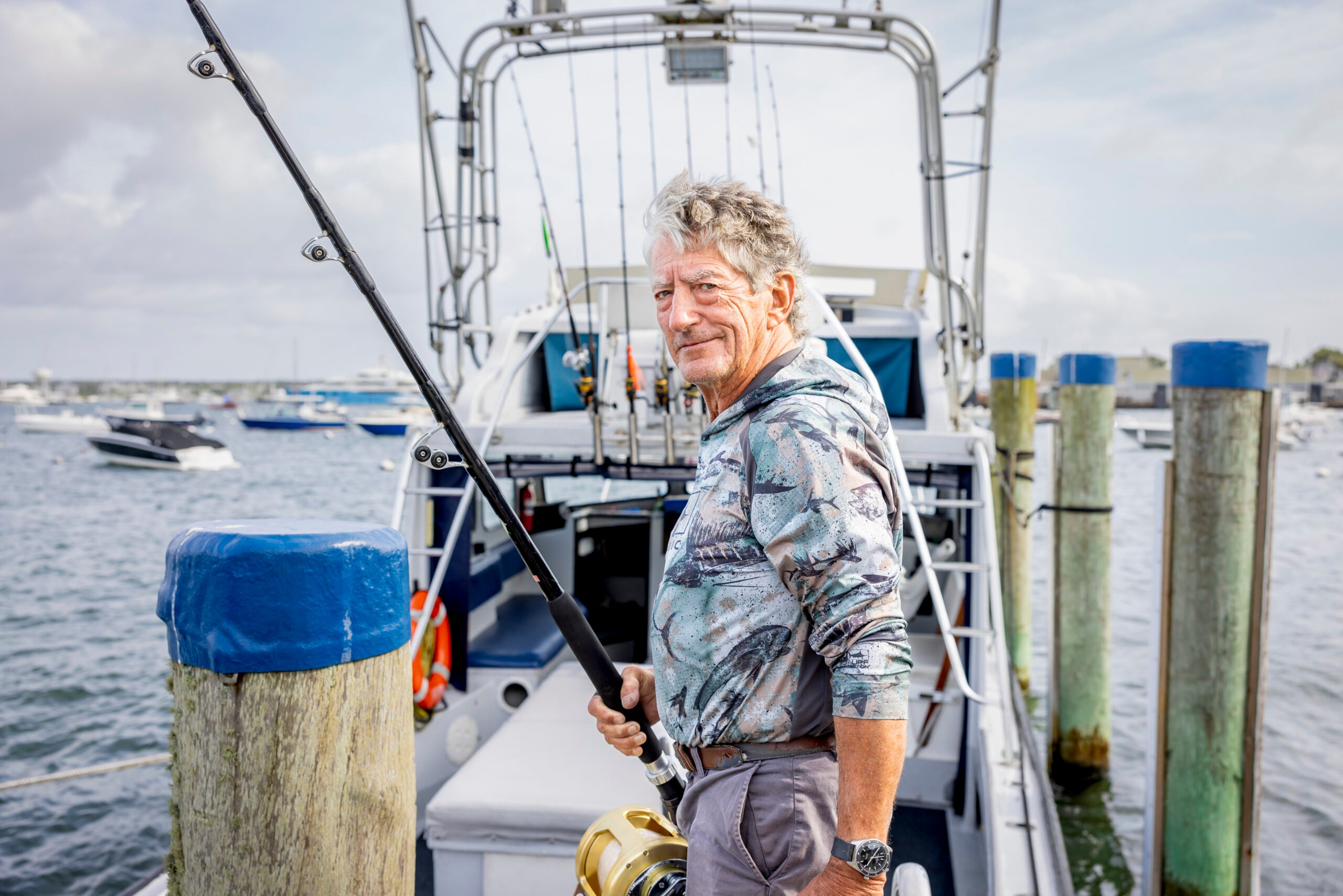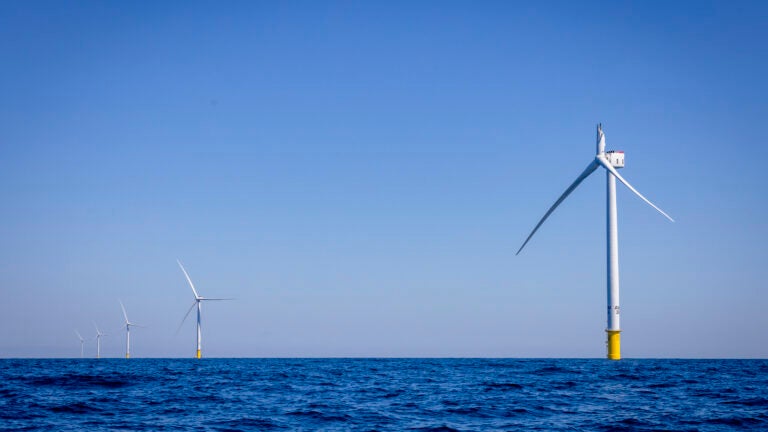Local News
Accidents involving blades made by GE Vernova have delayed projects off the coasts of Massachusetts and England and could imperil climate goals.
The collapse of a giant wind turbine blade off the Massachusetts coast confirmed Peter Kaizer’s worst fears about the dangers a new clean energy business could pose to fishermen like him.
Jagged pieces of fiberglass and other materials from the shattered blade drifted with the tide, forcing officials to close beaches on Nantucket and leaving Kaizer worried about the threat the fragments might pose to his vessel and other fishing boats, especially at night when the debris would be harder to avoid.
“All these small boats could be subject to damage,” Kaizer said. “Everyone wants this green legacy, but at the cost of what?”
The blade, which was more than 300 feet long, failed in July, but the repercussions are still unfolding at the $4 billion project that it came from — Vineyard Wind 1. Developers had hoped to finish the project this summer, making it the first large-scale wind farm completed in U.S. waters, but now that goal will take a lot longer than expected.
The blade failure is the latest problem slowing the fledgling U.S. offshore wind industry, which the Biden administration and East Coast states are counting on to deliver emission-free energy to millions of people from Virginia to Maine. President Joe Biden and governors of those states had hoped to follow the examples of European countries like Britain and Denmark, which have plunked down thousands of wind turbines around the North Sea.
But the American offshore wind business has struggled to get going because of cost overruns, delays in issuing permits, and opposition from local residents and fishing groups. Several large projects were canceled or postponed even before the blade failure in Massachusetts because their costs increased sharply and developers did not anticipate supply chain problems and higher interest rates.
The failure of the blade, which was made by GE Vernova, has also raised concerns about safety and reliability. In addition to the incident in Massachusetts, two GE Vernova blades broke this year at a wind farm called Dogger Bank, which is under construction off the coast of England. The company has said the incidents are unrelated but has provided few details about their causes.
Offshore wind turbines are essential to the East Coast because states like Massachusetts and New York do not have ideal conditions for lots of large solar and wind farms on land. Biden has said he wants 30 gigawatts of offshore wind capacity in place by 2030, enough to meet the needs of 10 million households.
The Vineyard Wind 1 farm is owned by Copenhagen Infrastructure Partners, a Danish investment firm, and Avangrid, the U.S. subsidiary of Iberdrola, a Spanish utility. After suspending construction there, federal officials allowed the developers in August to restart installing some components like towers and nacelles, the compartments at the top. But they are still barred from installing blades or operating completed turbines, depriving the project of revenue from electricity sales.
The risk of such events and the greater scrutiny of offshore wind projects that is expected to follow will probably raise the already high cost of offshore wind farms relative to other forms of renewable energy, analysts said. Those costs are typically borne by residents on their electricity bills and the federal and state governments that offer subsidies to wind and other renewable energy projects.

“I think there needs to be a bit of a reset in terms of how these offshore projects are thought about and the inherent risk in these projects,” said Andrew Kaplowitz, an analyst at Citigroup.
Much of the new scrutiny is likely to focus on the few companies that make wind turbines and their components, particularly GE Vernova, formerly the energy division of General Electric, the conglomerate that split itself into three companies this year.
In recent years, GE Vernova, which has long made wind turbines that are installed on land, joined a race to develop ever-larger offshore turbines. Its entry in this competition was the Haliade-X, a monster machine that is taller than any building in Boston. This is the turbine that was involved in the Vineyard Wind and Dogger Bank incidents.
By developing Haliade-X, executives at GE had hoped to capitalize on a prospective offshore boom by offering what was at that time the most powerful turbine on the market. Developers wanted larger turbines to make projects more profitable by allowing them to generate more energy from each machine.
For a while, the strategy worked. In the run-up to construction, Vineyard Wind’s owners shifted from a machine made by Vestas, a Danish turbine maker, to the GE turbine because it was nearly 40% larger.
But some of the promised gains of larger turbines have not materialized. The supply chain chaos caused by the pandemic raised the costs of many components, and Russia’s invasion of Ukraine pushed up the price of energy. GE Vernova’s offshore wind business is losing money, and its only secured orders are from two projects — Vineyard Wind and Dogger Bank. In June, Scott Strazik, GE Vernova’s CEO, said these deals were “all in the red,” meaning the company was losing money on them.
“It was business that was underwritten prior to Ukraine without, in some cases, the best escalation protections,” Strazik said, referring to contracts that did not allow the company to pass along higher costs to its customers.
GE Vernova declined to make Strazik or another executive available for an interview for this article but answered written questions.

The blade failures of this summer will not help. GE Vernova placed preliminary blame on what it called a “manufacturing deviation” at its factory in Gaspé, Quebec, for the shattered blade off Massachusetts.
Making giant wind farm blades involves arranging structural elements like carbon fiber and wood in a mold, which is then filled with liquid resins that harden and bind the ungainly structures together.
GE Vernova says there was “insufficient bonding that the quality assurance program should have identified.” The company said it was inspecting around 150 blades made at the plant, using a robot called a “crawler” that can move around inside the components. It also plans to use an algorithm, linked to sensors inside the blade, to warn of incidents.
The company insists that it has been hit with one-offs rather than systemic flaws. GE Vernova said the first failure at Dogger Bank, in May, had been caused by an error during installation. The second, in August, happened because a turbine was left in a “fixed position” during a storm.
“I think it is unusual to have three similar incidents like this,” said Eamon Nolan, a partner at the law firm of Vinson & Elkins. Nolan, who specializes in renewable energy, said he did not doubt GE Vernova’s explanations.
The makers of offshore turbines may have prized speed over quality, some industry officials said.
Fraser McLachlan, CEO of GCube, a London firm that insures wind turbines, said the industry had been so determined to increase the size of turbines that it might have skipped over some important steps.
“They haven’t had time to properly test” those larger turbines and blades, he said.
McLachlan added that the failure rates in offshore wind were much lower than in land-based wind turbines but that the costs of any failure tended to be far higher.
Some groups that have long opposed offshore wind turbines have seized on the failures as a reason regulators should be more reluctant to approve the use of these machines. Fishing industry organizations in particular complain that they have been told little about the cause of the accident off Nantucket and the dangers that blade fragments may pose to marine life and people.
“Vineyard Wind’s actions subsequent to the incident have raised legitimate questions of transparency,” the Responsible Offshore Development Alliance, which represents members of the commercial fishing industry, said in a letter to the Bureau of Safety and Environmental Enforcement, an arm of the Interior Department.

The beach closings, however brief, came as a shock to coastal communities, bringing home the potential downsides of living near a large energy project, even a renewable one.
Although wind and solar farms are important for reducing emissions, “they are, in order to be effective, industrial-scale activity,” said Andrew Gottlieb, executive director of the Association to Preserve Cape Cod, an environmental group that has supported the development of offshore wind. “And every industrial-scale activity has negatives associated with it.”
This article originally appeared in The New York Times.
